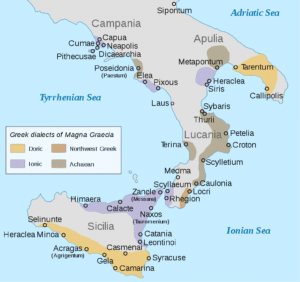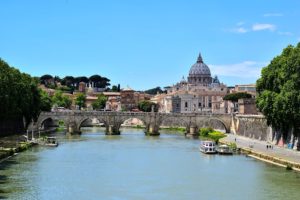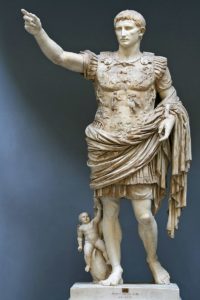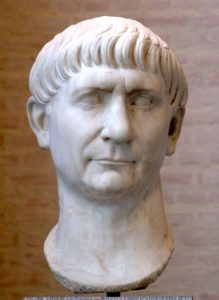The first foreign colonizers were the Phoenicians, who initially established colonies and founded various emporiums on the coasts of Sicily and Sardinia. Some of these soon became small urban centers and were developed parallel to the Greek colonies; among the main centers there were the cities of Motya, Zyz (modern Palermo), Soluntum in Sicily and Nora, Sulci, and Tharros in Sardinia.

Between the 17th and the 11th centuries BC Mycenaean Greeks established contacts with Italy and in the 8th and 7th centuries BC a number of Greek colonies were established all along the coast of Sicily and the southern part of the Italian Peninsula, that became known as Magna Graecia. The Greek colonization placed the Italic peoples in contact with democratic government forms and with elevated artistic and cultural expressions.
Ancient Rome:
Rome, a settlement around a ford on the river Tiber in central Italy conventionally founded in 753 BC, was ruled for a period of 244 years by a monarchical system, initially with sovereigns of Latin and Sabine origin, later by Etruscan kings.

The tradition handed down seven kings: Romulus, Numa Pompilius, Tullus Hostilius, Ancus Marcius, Tarquinius Priscus, Servius Tullius and Tarquinius Superbus. In 509 BC, the Romans expelled the last king from their city, favoring a government of the Senate and the People (SPQR) and establishing an oligarchic republic.
The Italian Peninsula, named Italia, was consolidated into a single entity during the Roman expansion and conquest of new lands at the expense of the other Italic tribes, Etruscans, Celts, and Greeks. A permanent association with most of the local tribes and cities was formed, and Rome began the conquest of Western Europe, Northern Africa and the Middle East. In the wake of Julius Caesar’s rise and death in the first century BC, Rome grew over the course of centuries into a massive empire stretching from Britain to the borders of Persia, and engulfing the whole Mediterranean basin, in which Greek and Roman and many other cultures merged into a unique civilization. The long and triumphant reign of the first emperor, Augustus, began a golden age of peace and prosperity.

Italy remained the metropole of the empire, and as the homeland of the Romans and the territory of the capital, maintained a special status which made it “not a province, but the Domina (ruler) of the provinces”. More than two centuries of stability followed, during which Italy was referred to as the rectrix mundi (queen of the world) and omnium terrarum parens (motherland of all lands).
The Roman Empire was among the most powerful economic, cultural, political and military forces in the world of its time, and it was one of the largest empires in world history. At its height under Trajan, it covered 5 million square kilometres.

The Roman legacy has deeply influenced the Western civilization, shaping most of the modern world; among the many legacies of Roman dominance are the widespread use of the Romance languages derived from Latin, the numerical system, the modern Western alphabet and calendar, and the emergence of Christianity as a major world religion. The Indo-Roman trade relations, beginning around the 1st century BCE, testifies to extensive Roman trade in far away regions; many reminders of the commercial trade between the Indian subcontinent and Italy have been found, such as the ivory statuette Pompeii Lakshmi from the ruins of Pompeii.
